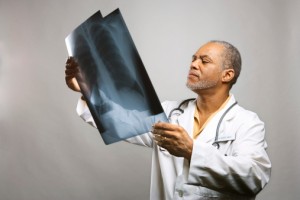Lose Weight > Common Sense To Lose Weight > Common Sense Article > The Likely Development Of Hydrogen Supplies For The UK
The Likely Development Of Hydrogen Supplies For The UK
There are several ways of making hydrogen in the UK. The cheapest way is to convert natural gas into hydrogen by a process called reformation. Reforming natural gas into hydrogen produces CO2 but no more than burning it. However, using the hydrogen in a hydrogen fuelcell or using the natural gas itself in a natural gas fuelcell produces at least twice as much useful energy for a given amount of natural gas than burning it (in a natural gas fuelcell the natural gas is 'reformed' inside the fuelcell).
Therefore to get the best use from natural gas we should endeavour to use it in fuelcells, either directly or after reforming it into hydrogen. Natural gas fuelcells will be a good bridge technology to a hydrogen-powered world.
Natural gas, i.e. methane, is a powerful greenhouse gas, 10 times more effective than CO2, so we should use up all the natural gas on Earth by burning it or using it in fuelcells before it escapes and adds to global warming. Commercial pressures are achieving this anyway and in due course natural gas will become scarce so we need to develop alternative ways to make hydrogen.
We should not rely on converting coal into hydrogen because obviously coal is not a greenhouse gas so to create CO2 as a by-product of converting coal into hydrogen is not justifiable on greenhouse gas priorities. However to convert coal into a gas suitable for use in fuelcells is better from a minimising the production of atmospheric CO2 point of view than simply burning coal as we used to. This technology may be a good way ahead for India and China to use some of their vast coal deposits.
But the UK and Europe cannot go back to increasing our reliance on coal because most of the CO2 emissions savings to date have been achieved by switching from coal to natural gas! If we did go back to coal we would be back to where we started in 1990. Nuclear power is not acceptable. So we do need to get on with developing alternative ways of making hydrogen. In the UK and Europe we are becoming dependent on natural gas which because of increasing use is going to become progressively more expensive and will eventually run out.
There are four main alternative methods available at present for producing hydrogen without producing CO2 or adding more CO2 to the atmosphere:
1) The electrolysis of water using electricity from renewable resources such as wind power, hydro-power and solar photo-voltaic cells. This method produces no carbon dioxide.
2) The chemical or thermal reformation of biomass feedstocks such as SRC (short rotation coppice) wood chips or methanol manufactured from biomass. This method releases carbon dioxide but it is all recycled by the growth of more biomass.
3) The biological reformation of biomass using micro-organisms. This method releases carbon dioxide but it is all recycled by the growth of more biomass.
4) The direct splitting of water using light with special catalysts or extreme heat, this method produces no carbon dioxide.
Of these four processes only the production of hydrogen by the electrolysis of water using electricity generated by offshore wind power is viable on a large multigigawatt scale in the UK.
Offshore wind power is the only large (ie multigigawatts) UK resource of clean renewable electricity that is likely to be available in the near future. Sufficient onshore wind power capacity is unlikely to get planning permission and the other renewables do not have sufficient capacity. The hydrogen will be manufactured in factories at the coast.
The hydrogen produced will be used for road transport applications, initially urban buses and, later on, cars.
In due course if solar-photo-voltaic (PV) electricity generation in North Africa becomes established, hydrogen, manufactured by the electrolysis of water, using the solar-PV electricity in North Africa, could be transmitted by gas pipelines across the Mediterranean Sea and throughout Europe and north into the UK. The hydrogen could then be used as a transport fuel or it could be converted into electricity and heat in fuelcell based cogeneration systems. Production could start in S. E. Spain and then expand into North Africa.
Assuming these developments take place then as a first step, the hydrogen from North Africa could be injected into the existing natural gas pipelines supplying the existing UK natural gas grid to enhance the energy value of the natural gas. This already occurs in the USA. Before we changed over to North Sea natural gas, we used town gas made from coal which was over 50% hydrogen.
The enriched natural gas will continue to be burned in existing central heating systems and cookers but new domestic systems will be based on fuelcells for the cogeneration of electricity and heat.
If hydrogen injection into existing natural gas pipelines is adopted, then only a small proportion of hydrogen can be injected because all of the gas appliances running on natural gas are sensitive to the proportions of different gasses in the gas mixture supplied. However, the volume of hydrogen to be delivered using this technique will be quite small relative to the volume of natural gas being delivered and so the gas mixture would be acceptable. It would not be possible however to keep increasing the proportion of hydrogen injected as hydrogen production increases.
What gas injection offers is an early route to market for the initial small scale production of hydrogen before separate hydrogen pipelines are built. When hydrogen becomes the main energy carrier, then sections of the natural gas grid will be changed to 100% hydrogen and the existing gas appliances in the area served will have to be adjusted to burn hydrogen. This is what happened when we changed from town gas - which was over 50% hydrogen - to North Sea gas.
Hydrogen injection is a way of integrating hydrogen into the existing natural gas system. It enables existing appliances to be used to burn the hydrogen and so provide a market for early production. The enriched natural gas can also be used to run natural gas fuelcells or can be reformed at the point of use to give hydrogen for use in hydrogen fuelcells. This enables fuelcells to be introduced alongside existing appliances all using the same fuel supply system.
Eventually the whole country will go over to 100% hydrogen, the gas grid will be increased in capacity and it is possible that the national electricity grid will no longer be required as the generation of electricity becomes locally based, using hydrogen fuelcell cogeneration systems.
The hydrogen-powered cogeneration systems will range in size from less than 1 kW up to 100s of MW. These systems will be located in single homes, large buildings or serve whole communities from a cogeneration centre.
Another likely route of hydrogen supply to the UK will be as liquid hydrogen delivered by ocean tanker from Canada, where hydroelectricity will be used to electrolyse water, or from Iceland where electricity from geothermal power may be used to electrolyse water.
In the early 1990s the EEC developed at the Joint Research Centre at Ispra in Italy the concept of the Euro-Quebec Hydro-Hydrogen Project for transporting liquid hydrogen across the Atlantic in special ship mounted barges. And in Iceland there is now an Icelandic government project to change the whole country over to a hydrogen-based energy system.
In due course there will be a world-wide trade in liquid hydrogen that will underpin each individual country's pipeline based systems. Liquid hydrogen supplies will provide security of supply and boost availability in winter by moving surplus summer production of hydrogen around the world. If there is an accident with a hydrogen tanker the hydrogen will boil away with no pollution. The process of liquefaction dissipates about 30% of the energy in the hydrogen, so pipeline distribution of hydrogen as a gas will always be the preferred option for bulk distribution.
Therefore to get the best use from natural gas we should endeavour to use it in fuelcells, either directly or after reforming it into hydrogen. Natural gas fuelcells will be a good bridge technology to a hydrogen-powered world.
Natural gas, i.e. methane, is a powerful greenhouse gas, 10 times more effective than CO2, so we should use up all the natural gas on Earth by burning it or using it in fuelcells before it escapes and adds to global warming. Commercial pressures are achieving this anyway and in due course natural gas will become scarce so we need to develop alternative ways to make hydrogen.
We should not rely on converting coal into hydrogen because obviously coal is not a greenhouse gas so to create CO2 as a by-product of converting coal into hydrogen is not justifiable on greenhouse gas priorities. However to convert coal into a gas suitable for use in fuelcells is better from a minimising the production of atmospheric CO2 point of view than simply burning coal as we used to. This technology may be a good way ahead for India and China to use some of their vast coal deposits.
But the UK and Europe cannot go back to increasing our reliance on coal because most of the CO2 emissions savings to date have been achieved by switching from coal to natural gas! If we did go back to coal we would be back to where we started in 1990. Nuclear power is not acceptable. So we do need to get on with developing alternative ways of making hydrogen. In the UK and Europe we are becoming dependent on natural gas which because of increasing use is going to become progressively more expensive and will eventually run out.
There are four main alternative methods available at present for producing hydrogen without producing CO2 or adding more CO2 to the atmosphere:
1) The electrolysis of water using electricity from renewable resources such as wind power, hydro-power and solar photo-voltaic cells. This method produces no carbon dioxide.
2) The chemical or thermal reformation of biomass feedstocks such as SRC (short rotation coppice) wood chips or methanol manufactured from biomass. This method releases carbon dioxide but it is all recycled by the growth of more biomass.
3) The biological reformation of biomass using micro-organisms. This method releases carbon dioxide but it is all recycled by the growth of more biomass.
4) The direct splitting of water using light with special catalysts or extreme heat, this method produces no carbon dioxide.
Of these four processes only the production of hydrogen by the electrolysis of water using electricity generated by offshore wind power is viable on a large multigigawatt scale in the UK.
Offshore wind power is the only large (ie multigigawatts) UK resource of clean renewable electricity that is likely to be available in the near future. Sufficient onshore wind power capacity is unlikely to get planning permission and the other renewables do not have sufficient capacity. The hydrogen will be manufactured in factories at the coast.
The hydrogen produced will be used for road transport applications, initially urban buses and, later on, cars.
In due course if solar-photo-voltaic (PV) electricity generation in North Africa becomes established, hydrogen, manufactured by the electrolysis of water, using the solar-PV electricity in North Africa, could be transmitted by gas pipelines across the Mediterranean Sea and throughout Europe and north into the UK. The hydrogen could then be used as a transport fuel or it could be converted into electricity and heat in fuelcell based cogeneration systems. Production could start in S. E. Spain and then expand into North Africa.
Assuming these developments take place then as a first step, the hydrogen from North Africa could be injected into the existing natural gas pipelines supplying the existing UK natural gas grid to enhance the energy value of the natural gas. This already occurs in the USA. Before we changed over to North Sea natural gas, we used town gas made from coal which was over 50% hydrogen.
The enriched natural gas will continue to be burned in existing central heating systems and cookers but new domestic systems will be based on fuelcells for the cogeneration of electricity and heat.
If hydrogen injection into existing natural gas pipelines is adopted, then only a small proportion of hydrogen can be injected because all of the gas appliances running on natural gas are sensitive to the proportions of different gasses in the gas mixture supplied. However, the volume of hydrogen to be delivered using this technique will be quite small relative to the volume of natural gas being delivered and so the gas mixture would be acceptable. It would not be possible however to keep increasing the proportion of hydrogen injected as hydrogen production increases.
What gas injection offers is an early route to market for the initial small scale production of hydrogen before separate hydrogen pipelines are built. When hydrogen becomes the main energy carrier, then sections of the natural gas grid will be changed to 100% hydrogen and the existing gas appliances in the area served will have to be adjusted to burn hydrogen. This is what happened when we changed from town gas - which was over 50% hydrogen - to North Sea gas.
Hydrogen injection is a way of integrating hydrogen into the existing natural gas system. It enables existing appliances to be used to burn the hydrogen and so provide a market for early production. The enriched natural gas can also be used to run natural gas fuelcells or can be reformed at the point of use to give hydrogen for use in hydrogen fuelcells. This enables fuelcells to be introduced alongside existing appliances all using the same fuel supply system.
Eventually the whole country will go over to 100% hydrogen, the gas grid will be increased in capacity and it is possible that the national electricity grid will no longer be required as the generation of electricity becomes locally based, using hydrogen fuelcell cogeneration systems.
The hydrogen-powered cogeneration systems will range in size from less than 1 kW up to 100s of MW. These systems will be located in single homes, large buildings or serve whole communities from a cogeneration centre.
Another likely route of hydrogen supply to the UK will be as liquid hydrogen delivered by ocean tanker from Canada, where hydroelectricity will be used to electrolyse water, or from Iceland where electricity from geothermal power may be used to electrolyse water.
In the early 1990s the EEC developed at the Joint Research Centre at Ispra in Italy the concept of the Euro-Quebec Hydro-Hydrogen Project for transporting liquid hydrogen across the Atlantic in special ship mounted barges. And in Iceland there is now an Icelandic government project to change the whole country over to a hydrogen-based energy system.
In due course there will be a world-wide trade in liquid hydrogen that will underpin each individual country's pipeline based systems. Liquid hydrogen supplies will provide security of supply and boost availability in winter by moving surplus summer production of hydrogen around the world. If there is an accident with a hydrogen tanker the hydrogen will boil away with no pollution. The process of liquefaction dissipates about 30% of the energy in the hydrogen, so pipeline distribution of hydrogen as a gas will always be the preferred option for bulk distribution.
Related Articles
-
3 Post-Workout Eating Mistakes You May Be Making
Sometimes the only motiv
-
More Tips To Improve Your Weight Loss
If you are like me you are probably totally sick of dieting becaus
-
Cha De Bugre To Lose Weight
Cha de Bugre (Cordia ecalyculata) is a small tree 20-40 feet high and
-
Weight-loss basics
Your weight is a balancing act, and calories are part of that
-
A Mindful Chocolate Meditation
A MINDFUL CHOCOLATE MEDITATION Walk into any grocery store and ther
-
Seven Portion Control Tips For Dieters
One of the key elements to losing weight and keeping it off is practi
- DON'T MISS
- Crohn’s disease flare-up symptoms, triggers, management, and prevention
- Quick Weight Loss
- Emotional Eating Help: Finding Things to do INSTEAD of Eating
- A Guide To Controlling Food Cravings With Success
- Everyday Tips for Losing 10 Pounds
- How To Choose An Ideal Weight Loss Program
- Weight Loss and Exercise
- Losing 7-10 Pounds Quickly and Safely Using these Simple Techniques
- 5 Key Strategies for Successful Weight Loss and Beyond
- B12 Shots Can Certainly Maximize Your Nutritional Values




